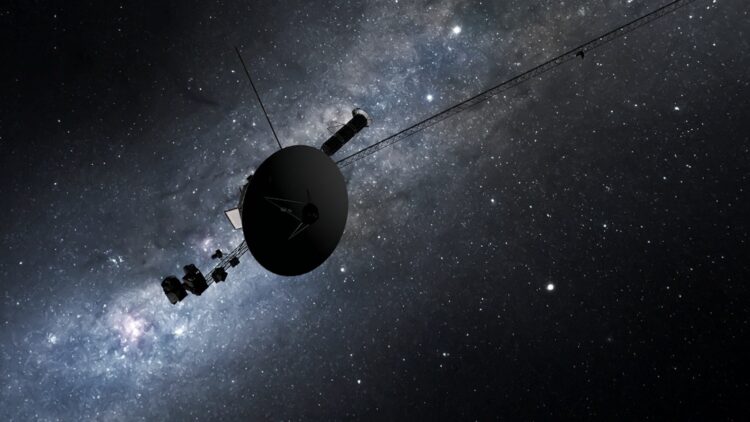Imagine sending a message and it taking a whole day to travel at the speed of light to reach its destination. We could make lots of jokes about how your friends and loved ones ghost you every time you send them a text message, but no, we’re talking about Voyager 1.
On November 1, 2026, Voyager 1 will reach 16 billion pounds away from Earth; that is, exactly one light-day away. This is a historic milestone that symbolizes both the limits of perseverance and human exploration in space. (And yes, more than one person would also like to send their ex that far away, but this is a serious article /s).
What is the Voyager 1?
The Voyager 1 is one of a pair of spacecraft launched by NASA in 1977. Its initial mission was to study Jupiter and Saturn, although it has since been used to explore interstellar space.
It is currently the furthest man-made object from Earth. It is small but powerful: about the size of a small car, it is powered by radioisotope generators that still manage to power some of its instruments. NASA can do many things, but it would never consider adding planned obsolescence to the gadgets it sends into outer space.
In 2012, it crossed the heliopause (not to be confused with menopause… which could also be in an aircraft of its age) and entered interstellar space.
What exactly is a light day?
Please note that the following calculations are based on the metric system; NASA has a habit of keeping up with the rest of the international scientific community. To begin with, light travels at 299,792 km/s. In one day, it travels ~25.9 billion km, or 16 billion miles. This will be the distance from Voyager 1 to Earth around November 2026.
When NASA sends messages, or Voyager Guan sends a signal from the spacecraft, it will take approximately 24 hours to arrive. To give us an idea, sunlight only takes eight minutes to reach Earth. This kind of comparison gives us an idea of how immense space is.
Voyager 1 in the Universe
It may seem silly to us, but these kind of milestones are extremely important: the first orbit, the first moon landing, the first crossing into interstellar space. Just as sending humans to the moon was a giant leap for mankind, getting a human-made device so far from Earth —this spacecraft reamaining operative for decades—is another milestone in the history of our civilization.
It also also emphasizes the limitations of our technology: Voyager 1 travels at ~61,000 km/h (38,000 mph), and yet it took almost 50 years for the spacecraft to reach just one light-day. Compared to light, the space travel that we humans can do is snail-slow. Interstellar travel is off the table with the limitations of our technology. However, it is a sign of hope, as it shows that perseverance and engineering are capable of achieving unthinkable feats.
Maintaining contact with the spacecraft is also quite an engineering feat. The signals we receive are incredibly weak, —weaker than the light from a refrigerator, to give you an idea. It is still unable to transmit data such as magnetic fields, plasma, and cosmic rays, all kinds of raw data which are essential for understanding interstellar space. To capture these signals, the Deep Space Network (DSN) has antennas in California, Spain, and Australia.
However, we have bad news: its energy sources are running out, and it is estimated that it will stop transmitting scientific data around 2030. Although it breaks our hearts, Voyager 1 will have served for no less than 53 years, so we can leave it alone to enjoy its well-earned retirement in the infinity and beyond. It will float around like a bottle thrown by humanity at the sea that is the universe. Isn’t that poetic?

